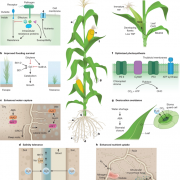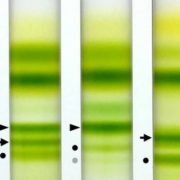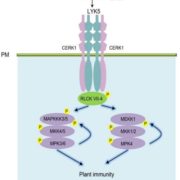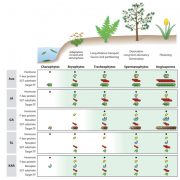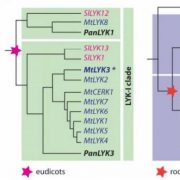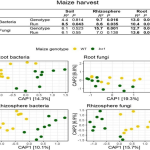Functional diversification of a wild potato immune receptor at its center of origin
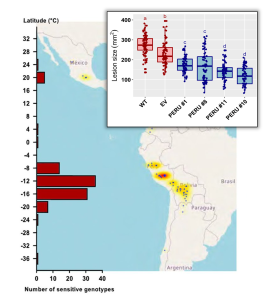 In many biology textbook, plant pathology is introduced through the historical context of the 1840s great potato famine, caused by colonial ideologies and a virulent pathogen. This causal agent, Phytophthora infestans, is an oomycete that is still present in the environment and causing outbreaks of late blight in solanaceous plants. Here, new insights into the molecular interactions between Phytophthora and potato are uncovered, starting from the discovery in 1994 of Pep-13, an oomycete-produced immunogenic peptide. Screens in wild potato accessions eventually led to the identification of a receptor protein that recognizes Pep-13, named Pep-13 receptor unit (PERU; an excellent name that reflects the geographic center of origin of potato). PERU is a leucine-rich repeat receptor kinase (LRR) protein, similar to other pathogen-recognition proteins. The authors found the greatest number and diversity of PERU alleles in accessions from the Central Andes (Peru), and also found evidence that PERU shows functional diversification in these populations of tuber-bearing Solanum. This elegant research not only adds a nice chapter to the potato / Phytophthora story, but also provides a new tool in the fight against late blight. (Summary by Mary Williams @PlantTeaching) Science 10.1126/science.adg5261
In many biology textbook, plant pathology is introduced through the historical context of the 1840s great potato famine, caused by colonial ideologies and a virulent pathogen. This causal agent, Phytophthora infestans, is an oomycete that is still present in the environment and causing outbreaks of late blight in solanaceous plants. Here, new insights into the molecular interactions between Phytophthora and potato are uncovered, starting from the discovery in 1994 of Pep-13, an oomycete-produced immunogenic peptide. Screens in wild potato accessions eventually led to the identification of a receptor protein that recognizes Pep-13, named Pep-13 receptor unit (PERU; an excellent name that reflects the geographic center of origin of potato). PERU is a leucine-rich repeat receptor kinase (LRR) protein, similar to other pathogen-recognition proteins. The authors found the greatest number and diversity of PERU alleles in accessions from the Central Andes (Peru), and also found evidence that PERU shows functional diversification in these populations of tuber-bearing Solanum. This elegant research not only adds a nice chapter to the potato / Phytophthora story, but also provides a new tool in the fight against late blight. (Summary by Mary Williams @PlantTeaching) Science 10.1126/science.adg5261


